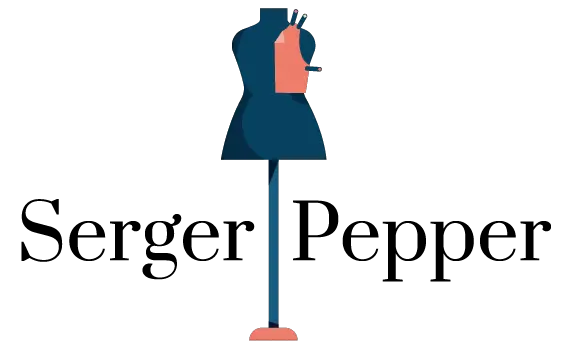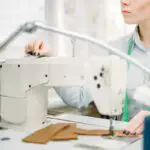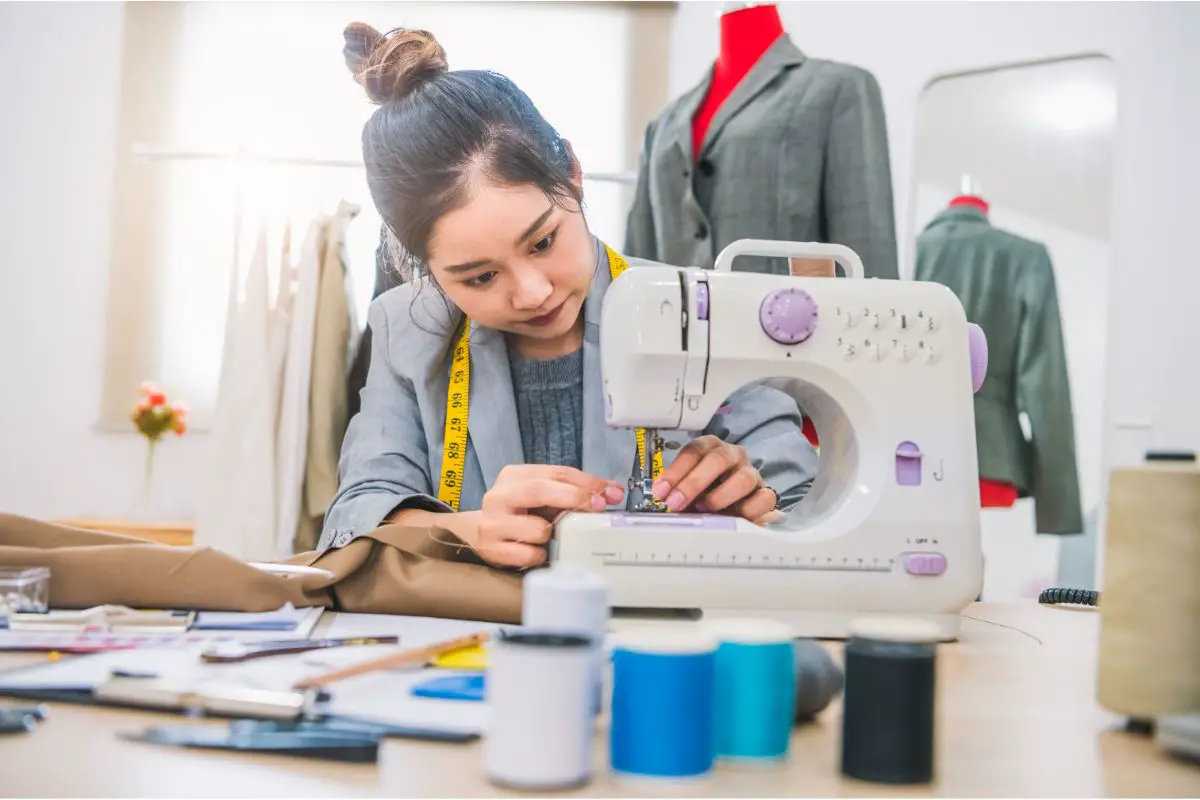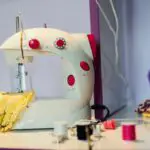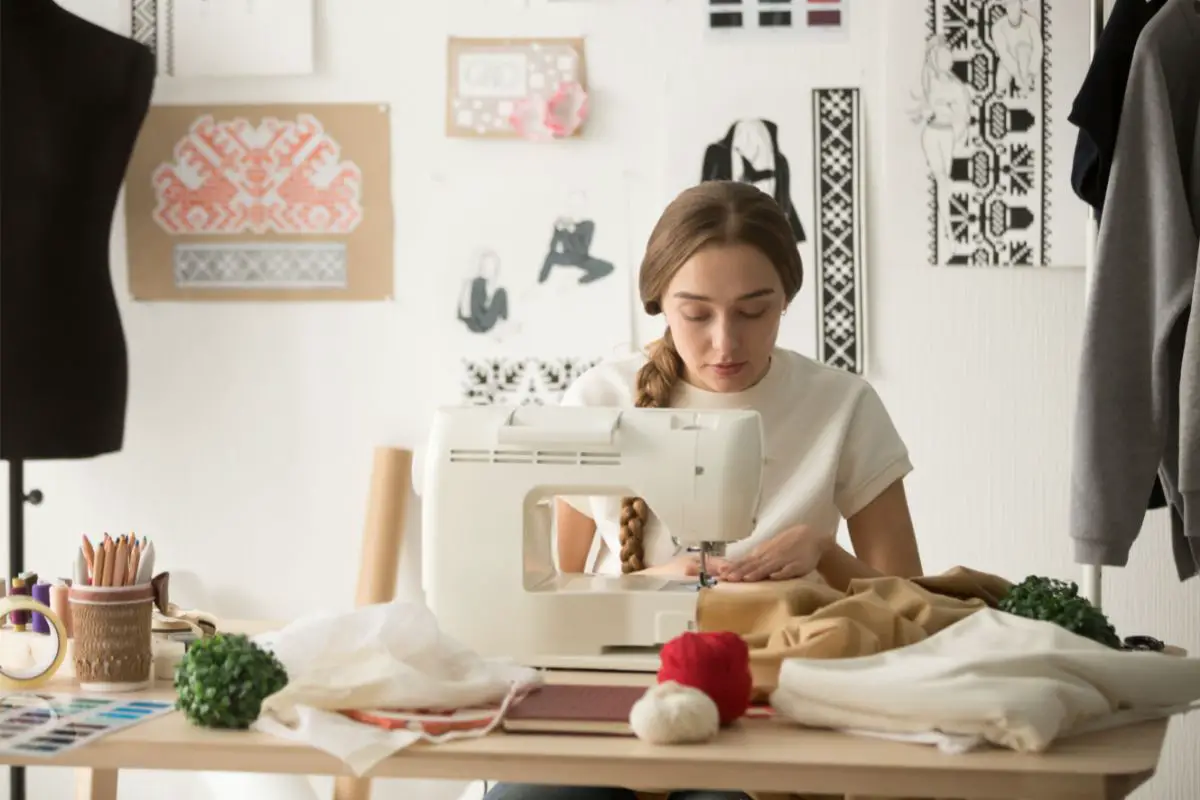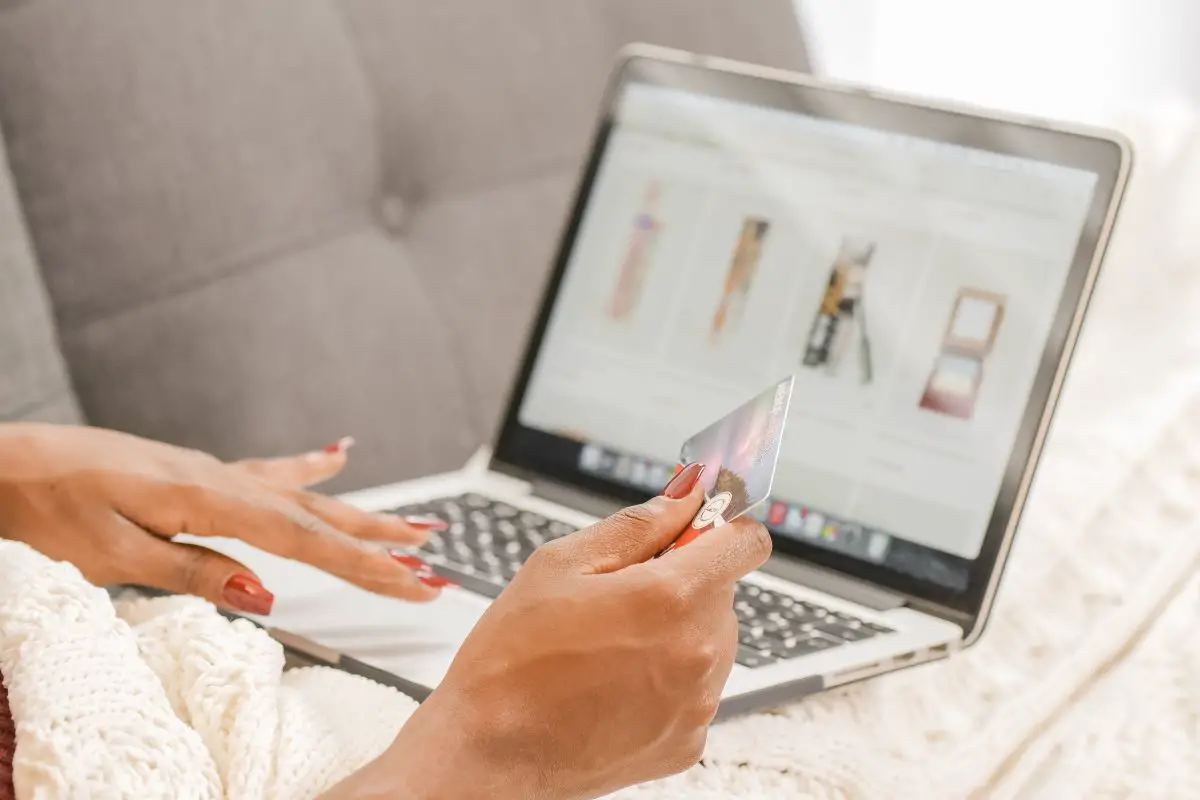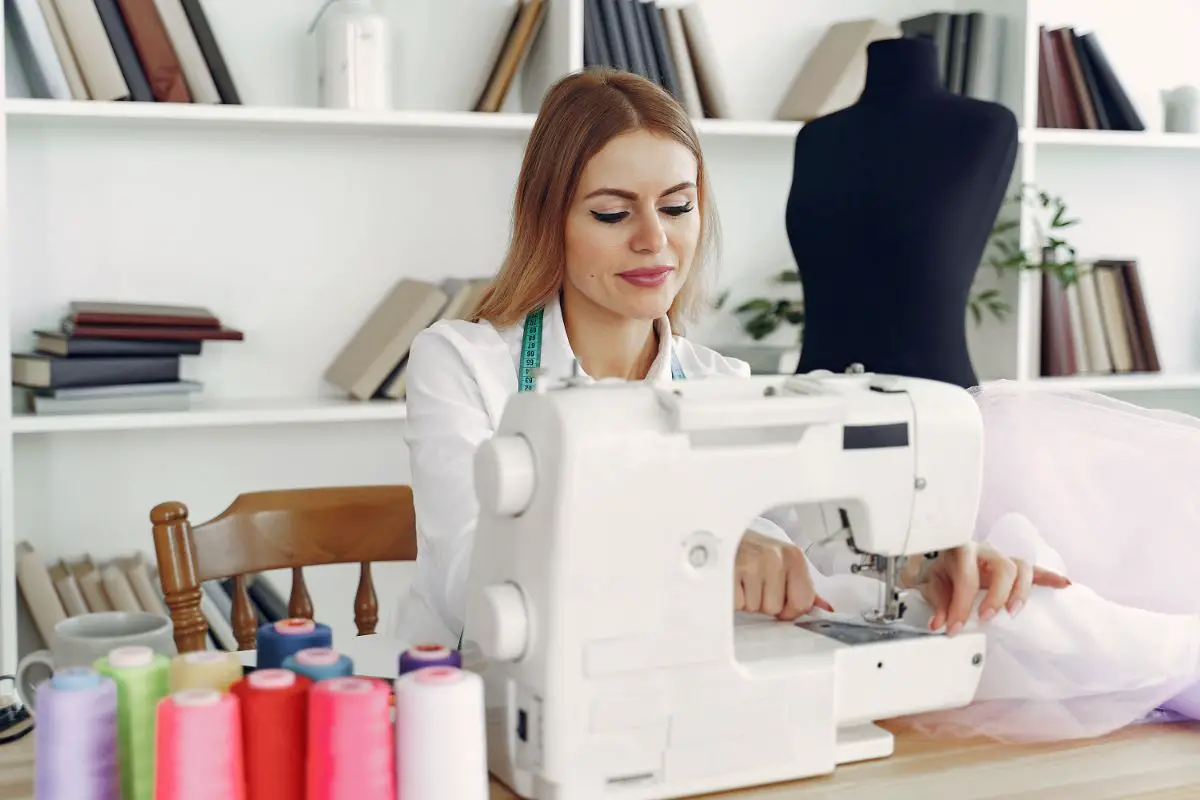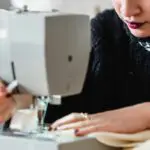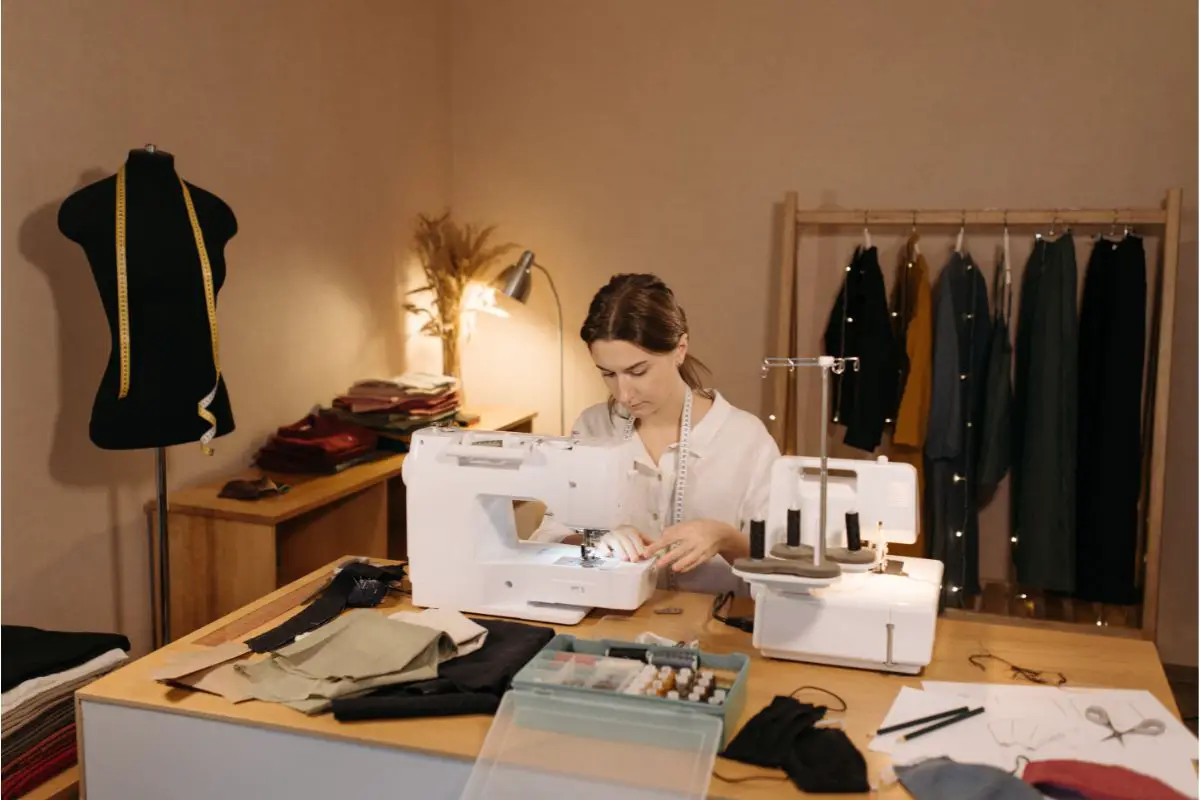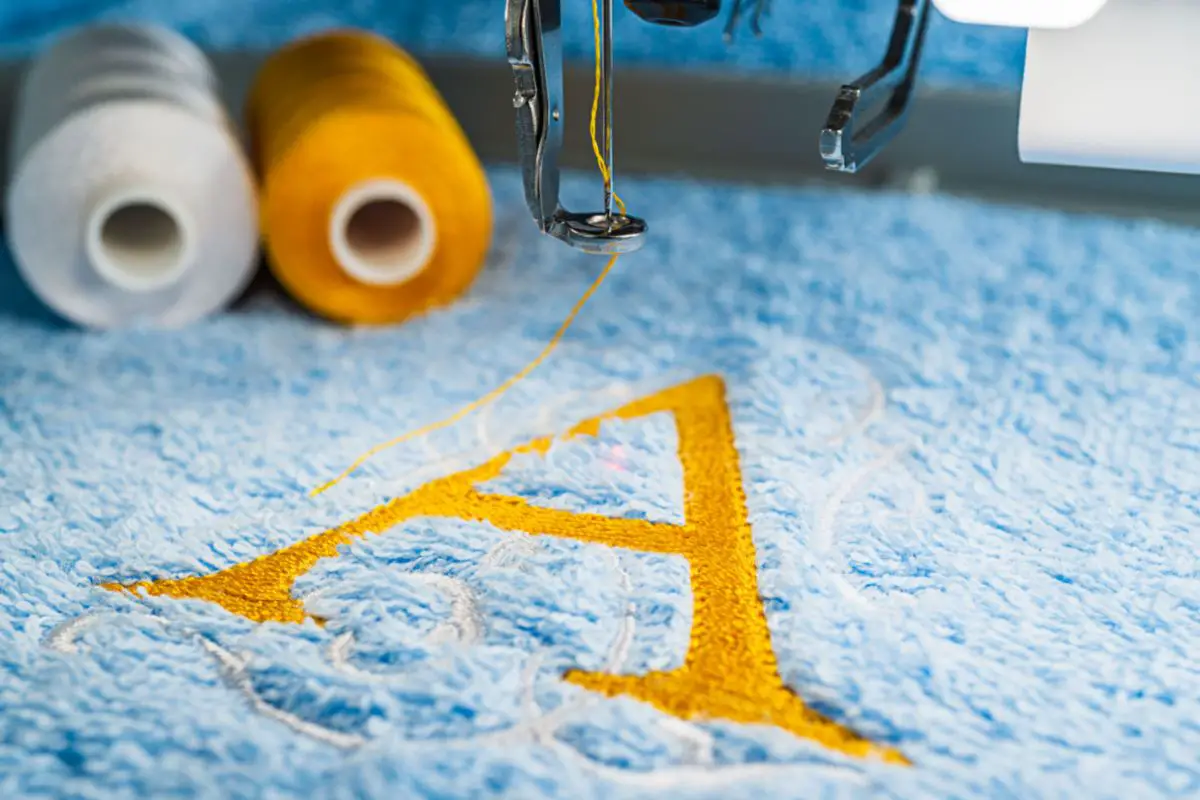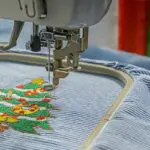Getting your first sewing machine can be a really exciting experience as you get into sewing as a hobby. However, for many people, excitement can take over, and much of the instruction booklet remains unread.
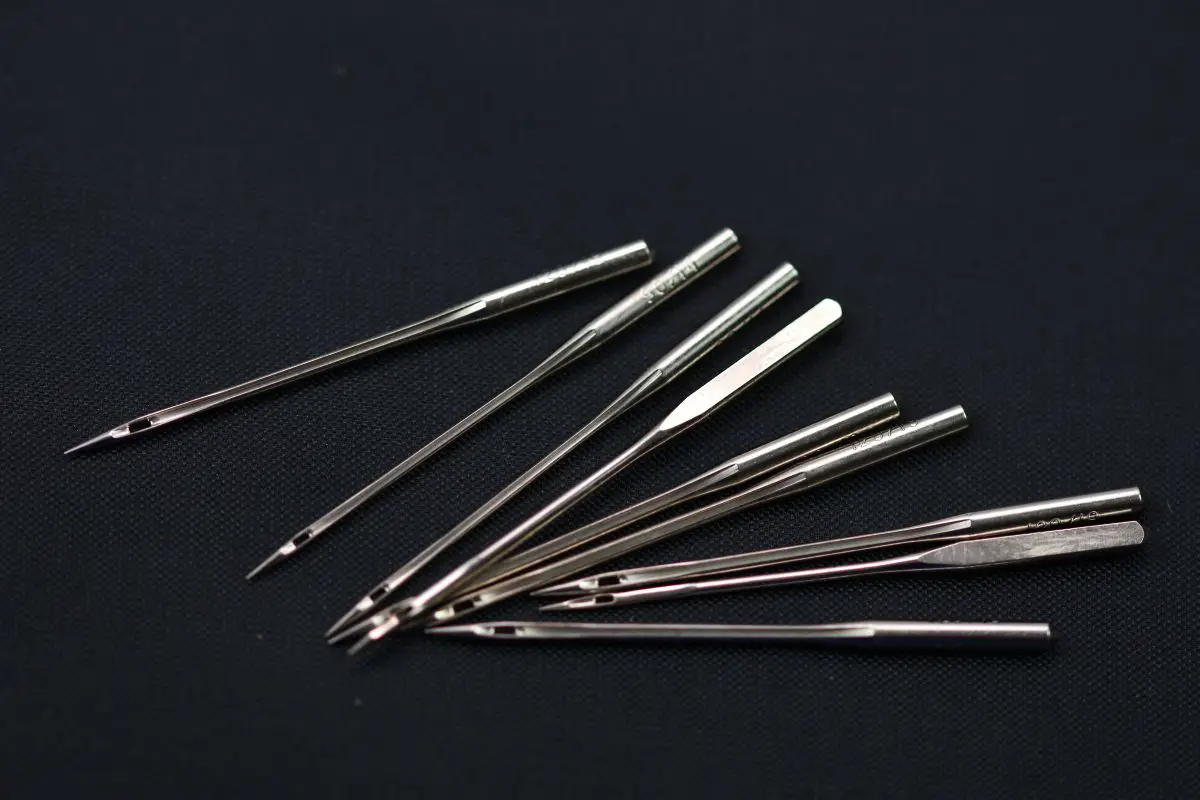
This can lead to important information being missed and ultimately the sewing machine not being used to its full potential with your projects.
Nowadays there are multiple different types of needles that can be used with sewing machines, and all of them provide different effects for your project.
Some sewing machines come with a selection of different needles as standard, but others can be purchased separately depending on your needs.
In this article, we will look at the different types and sizes of sewing machine needles and what they can be used for.
Difference Between Hand And Machine Needles
This article is specifically looking at the types and sizes of needles used with a sewing machine rather than hand-sewing needles. So, what’s the difference?
The main difference between hand and machine needles lies at the head of the needle rather than the point. A hand-sewing needle features a small hole or an eye at the top.
This is where the thread is attached to the needle.
A sewing machine needle is solid at the top, this is where the needle attaches to the machine. The eye of the needle is located closer to the point of the needle instead.
It is important to remember that sewing machine needles and hand-sewing needles are not interchangeable and should only be used in the way that they have been designed to be.
Parts Of A Sewing Machine Needle
A sewing machine needle is made up of four main parts, the shank, the shaft, the groove, and the eye point (see also “Our Favorite Made In USA Sewing Machines“).
The shank is the very top part of the sewing machine needle. This is the part that connects the needle to the machine. Shanks can be cylindrical or flat.
Below the shank is the shaft. This is essentially the length of the needle running from the shank to the tip of the needle. The shaft can vary in size and shape depending on the type of needle you have.
Along the bottom half of the shaft, there is a groove. This groove is designed to keep the thread in place as it passes through the eye of the needle.
The groove often changes slightly towards the eye of the needle to encourage the loop in the thread to create the stitch.
Finally, at the bottom of the sewing machine needle is the eye point. This is where the eye of the needle is located and where the thread sits.
It also features the sharp point of the needle that pierces through the fabric that you are sewing.
Types Of Sewing Machine Needles
There are multiple different types of needles that you can purchase for your sewing machine. Below we will look at the three main types of general-use sewing machine needles and what they are useful for.
Universal Needles
Needles that are labeled as universal needles are the ultimate general-purpose sewing machine needle. The majority of these needles feature a slightly rounded point at the end.
These needles will work for the majority of woven or knitted fabrics. These needles are unlikely to stitch leather or denim well.
If you are unsure about the type of needle that you need for a project, beginning with a universal needle is a good place to start.
As you gain more knowledge of different needles or as your project progresses, you can swap to a more appropriate needle.
The best way to describe these needles is a jack of all trades but a master of none. They are perfect for general use or can be used in an emergency if a specialty needle breaks mid-way through a project.
Ballpoint Needles
These needles are exactly what they sound like. The end of the needle is rounded rather than pointed. This is because it is designed to slip between the loops of a knitted fabric rather than piercing the fabric.
These needles have been made for use specifically on knitted fabrics. Slipping between the natural loops rather than piercing the fabric helps to avoid skipped stitches or damage to the fabric.
Whenever you are working with a knitted fabric, it is recommended that you use a ballpoint needle rather than a needle with a sharp point to get the best results.
Sharp Needles
Needles with a sharp point are sometimes known as Microtex needles. These have been designed to be used with woven fabric that has a high density.
The sharp point on the needle cleanly pierces the thick or dense fabric, it is designed to create minimal resistance during the sewing process.
This type of needle is perfect for when you are working with densely woven natural fabrics such as silk, or for heavyweight woven fabrics.
This type of needle can also be used when you are completing topstitching where the needle might need to go through multiple layers of interfacing and fabric.
Types Of Specialty Needles
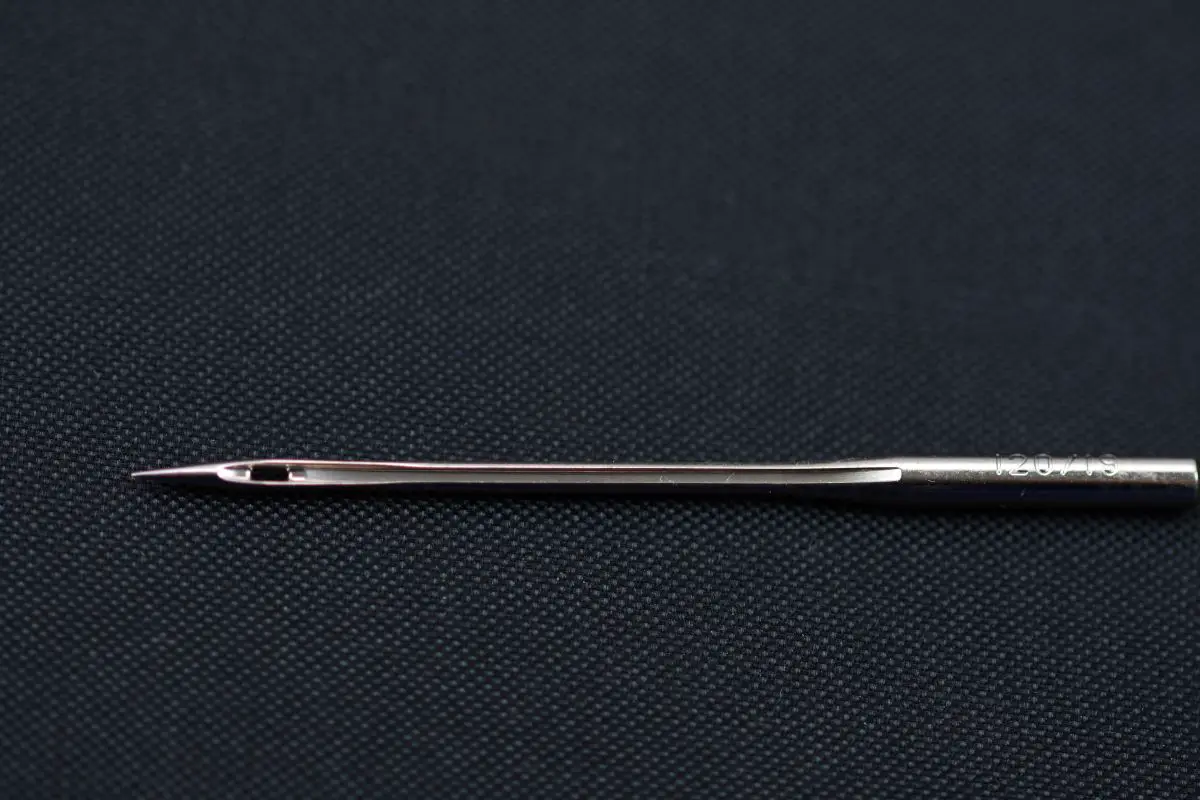
As well as there being three types of main, general-use needles, there are also plenty of different types of needles that are designed to create a specific effect of work with a specific type of material.
These needles are known as specialty needles. Below we will look at the different types of specialty needles you can use with a sewing machine.
Stretch Needle
A stretch needle is also known as a specialty version of a classic ballpoint needle. This means that it won’t damage a stretch fabric during the sewing process.
There are a few crucial differences between a stretch needle and a ballpoint needle which means they are not completely interchangeable.
A stretch needle has a slightly less rounded tip than a ballpoint needle. This feature helps to avoid skipped stitches on materials that contain high levels of elastane.
These needles also have a modified groove and eye that are designed to allow better pick up of the top thread by the hook on the needle.
Quilting Needle
These needles do exactly what they say on the tin. Quilting needles are designed to be used when applying quilting stitches to a project.
These needles have a specially designed taper on them which leads to a very sharp point.
It is the incredibly sharp point that makes this needle perfect for penetrating through the multiple layers of fabric that are used in quilting.
The needle is also sharp enough to penetrate areas of intersecting seams with no issues.
Leather Needle
As the name suggests, this needle has been designed to be used when you are sewing with leather. A leather needle has a wedge shape to it that resembles an arrowhead.
This design helps the needle to pierce through the leather or suede cleanly and easily.
Using a leather needle when working with leather helps to prevent the fabric from being torn or otherwise damaged. It also helps to avoid skipped stitches while you are working.
It is important to remember that this needle shouldn’t be used for stitching knitted or woven fabric.
Denim/Jeans Needle
A denim or jeans needle is one of the strongest needles that you can get. These needles feature a very long and very sharp point that has been designed to be able to pierce through denim.
Not only does this type of needle work really well with multiple layers of heavyweight fabrics such as denim, but it also works well with canvas which can be useful.
Metallic Needle
A metallic needle is one of the most unique needles on this list. These needles have elongated eyes that are designed to protect the special metallic thread that should be used with them.
The elongated eye in these needles helps to reduce the friction that is experienced by the metallic thread which helps to minimize the risk of breakage and wear on the thread.
Topstitch Needle
Similarly to the metallic needle, topstitch needles have a very large eye. However, they also have an incredibly sharp point and a larger groove than other needles.
All of these features are designed to accommodate thick or decorative threads that are necessary for topstitching through multiple layers of fabric.
Machine Embroidery Needle
Whether you have rayon, cotton, or polyester thread that you are embroidering with, you will need to use a machine embroidery needle.
These needles have a medium-sharp point that is somewhere between a ballpoint needle and a sharp needle. There is also an oversized groove and eye on this type of needle.
The features of this needle have been designed specifically to protect delicate threads from friction that occurs during the embroidery process. This can help maintain a high-quality finish for your work.
Twin/Double Needle
As the name suggests, this type of needle has two needle points on one shaft. These two needle points are designed to produce two separate rows of parallel stitches.
This type of needle is particularly useful for things such as hemming to produce a professional and neat finish.
Twin or double needles can also be used for faux cover stitches (see also “Twin Needle To Stitch Knits: Your Complete Guide“), pintucks, heirloom stitching, and decorative topstitching.
When purchasing twin needles, you can choose how far apart the needles are on the shaft to create the desired effect. This should be taken into account when purchasing this type of needle.
You can also purchase triple needles if you need three parallel stitches.
Hemstitch Needle
The hemstitch needle, otherwise known as the wing needle, is the perfect needle for any sewing that you want to be pretty or decorative.
The hemstitch needle features a wide blade, also known as a wing, on either side of the needlepoint. These wings cut a decorative groove into the fabric every time the needle pierces it.
Other Needle Types
There are a few other types of needles that you can purchase for your sewing machine. There are needles known as double-eye needles which are essentially universal needles with two eyes for two different threads.
There are also quick-threading needles that do what they say on the tin. There is a special slot on one side that helps the thread slip through the eye.
Sewing Machine Needle Sizes
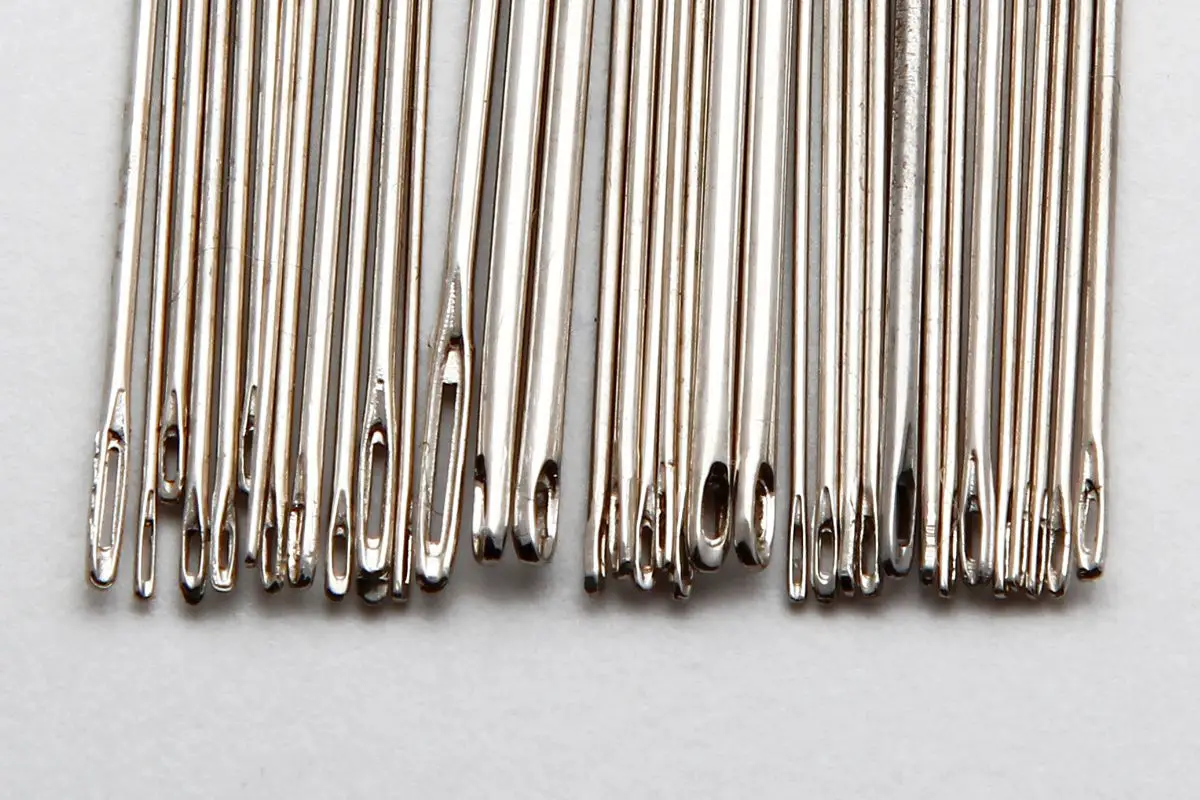
Now that we have covered the different types of needles that you can buy for your sewing machine and what they do, it is time to look at the different sizes of needles that you can buy.
What Do The Numbers Mean?
When you are looking at sewing machine needles, you will notice that there are two different numbers on the needles. These two numbers correspond to the European and American sizes of the needle.
When looking at needles, the European number is displayed first, followed by a backslash then the American number.
An easy way to convert the numbers into a measurement that is easy to understand involves the European number system. A needle that is numbered 100 on the European side is 1mm in diameter.
This means that a 90 needle is 0.9mm in diameter and a 120 needle is 1.2mm in diameter.
A general rule of thumb for needle sizes is that the smaller the number is on the needle, the finer the needle is. The finer a needle is, the finer the thread that it can accommodate.
Conversely, the thicker a needle is, the thicker the thread that it can accommodate will be.
Fabric Weight Considerations
In general, when you are choosing a needle for your sewing machine, you need to take into consideration the weight of the fabric that you are going to be sewing.
However, to consider the weight of the fabric, you need to know how the weight of the fabric is calculated. The weight of a fabric is determined by the thickness, density, and thread composition of the material.
The thicker and heavier a fabric is, the thicker your needle will need to be in order to penetrate it. On the other hand, a thinner, more delicate fabric would be damaged by a thick needle and would require a finer one.
It is important to remember that fabrics come in all different thicknesses and sizes so there isn’t a one-size-fits-all formula for which material needs which needle.
Thread Weight And Type
Another consideration to take into account is the weight and type of thread that you are using to sew (see also “Best Serger Thread?“). The thread has to go through the eye of the needle so an appropriate needle is necessary to avoid issues when sewing.
As a general rule, the larger the needle, the heavier or thicker the thread can and should be. If you use a thin, lightweight thread with a large needle, the thread won’t fully fill the hole left in the fabric by the large needle.
Alternatively, if you use a thick or heavy thread with a fine needle, you run the risk of skipped stitches, broken threads, and even tension issues that can affect the overall appearance of your stitching.
The thread will also struggle to pass through the eye of the needle.
Final Thoughts
There are so many different types and sizes of needles that you can purchase for your sewing machine. Each type of needle works to provide a different benefit to your sewing.
It is important to make sure that you are using an appropriate needle when sewing with your machine to ensure the best results for your sewing projects and garments.
- How To Sew Fabrics Together - June 5, 2023
- How Many Stitches Per Inch? - June 5, 2023
- How Long Does It Take To Sew A Dress? - June 5, 2023
